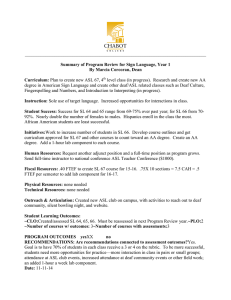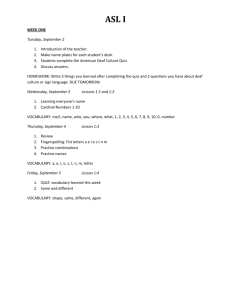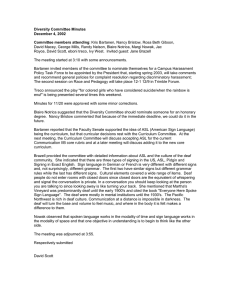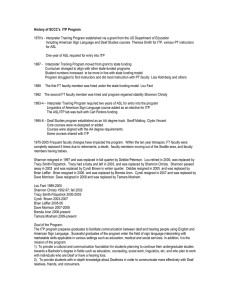The Effect of New Technologies on Sign Language Research It is well known that studies of the structure and use of sign language usually
advertisement
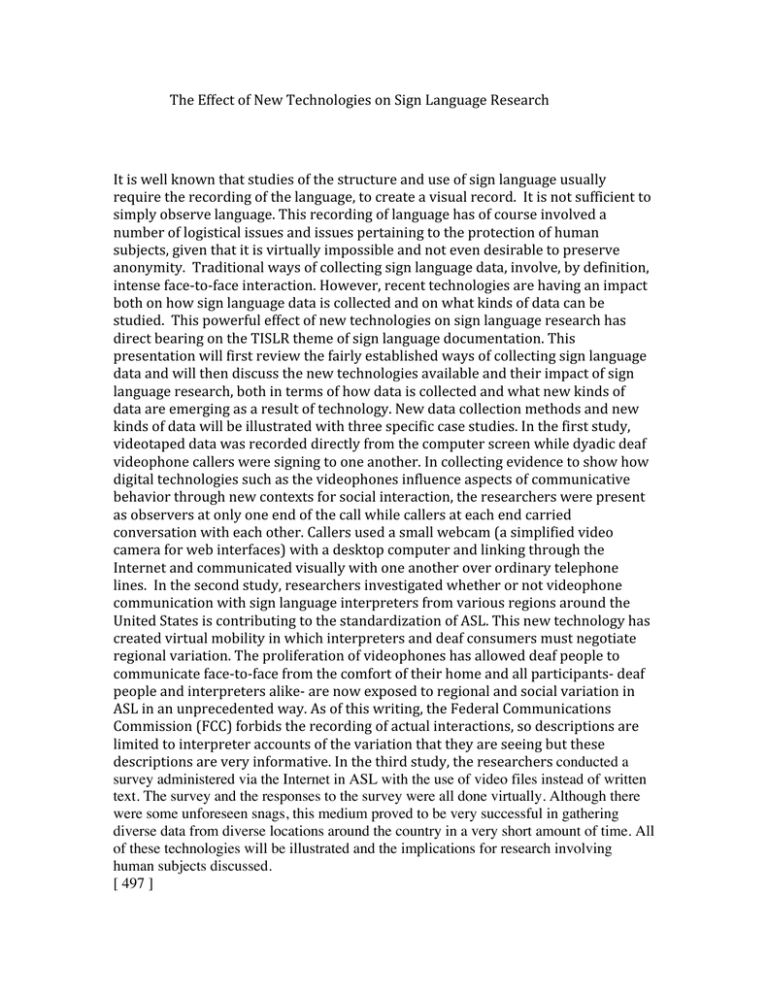
The Effect of New Technologies on Sign Language Research It is well known that studies of the structure and use of sign language usually require the recording of the language, to create a visual record. It is not sufficient to simply observe language. This recording of language has of course involved a number of logistical issues and issues pertaining to the protection of human subjects, given that it is virtually impossible and not even desirable to preserve anonymity. Traditional ways of collecting sign language data, involve, by definition, intense face‐to‐face interaction. However, recent technologies are having an impact both on how sign language data is collected and on what kinds of data can be studied. This powerful effect of new technologies on sign language research has direct bearing on the TISLR theme of sign language documentation. This presentation will first review the fairly established ways of collecting sign language data and will then discuss the new technologies available and their impact of sign language research, both in terms of how data is collected and what new kinds of data are emerging as a result of technology. New data collection methods and new kinds of data will be illustrated with three specific case studies. In the first study, videotaped data was recorded directly from the computer screen while dyadic deaf videophone callers were signing to one another. In collecting evidence to show how digital technologies such as the videophones influence aspects of communicative behavior through new contexts for social interaction, the researchers were present as observers at only one end of the call while callers at each end carried conversation with each other. Callers used a small webcam (a simplified video camera for web interfaces) with a desktop computer and linking through the Internet and communicated visually with one another over ordinary telephone lines. In the second study, researchers investigated whether or not videophone communication with sign language interpreters from various regions around the United States is contributing to the standardization of ASL. This new technology has created virtual mobility in which interpreters and deaf consumers must negotiate regional variation. The proliferation of videophones has allowed deaf people to communicate face‐to‐face from the comfort of their home and all participants‐ deaf people and interpreters alike‐ are now exposed to regional and social variation in ASL in an unprecedented way. As of this writing, the Federal Communications Commission (FCC) forbids the recording of actual interactions, so descriptions are limited to interpreter accounts of the variation that they are seeing but these descriptions are very informative. In the third study, the researchers conducted a survey administered via the Internet in ASL with the use of video files instead of written text. The survey and the responses to the survey were all done virtually. Although there were some unforeseen snags, this medium proved to be very successful in gathering diverse data from diverse locations around the country in a very short amount of time. All of these technologies will be illustrated and the implications for research involving human subjects discussed. [ 497 ]


